The 11 Best (And 11 Worst) Stocks of the 11-Year Bull Market
The 11-year bull market has created a host of winners returning 5,000% or more, but many stocks have not been so lucky. Here are the 2009-20 bull market's best and worst stocks.


It might not feel like it right now, as the coronavirus panic is roiling the stock market. But we're still technically in the longest bull market in history at 132 months and counting – a run that sent the best stocks of the group up by several thousand percent.
That might not be the case for much longer, but nothing lasts forever. This bull market is destined to come to an end, like all the rest. But it's still worthwhile to stop and consider a run for stocks that shattered all longevity records.
The great 1990s bull market (the previous title holder) lasted 113 months and saw the S&P 500 advance by 417%. That market occurred during the dot-com era, of course, dominated by new technology stocks. The current bull market – which has seen the S&P 500 advance by 339% – hasn't been quite as spectacular. But technology has been a big story here as well. Retail, medical devices and fintech also have a healthy representation among the biggest winners.
Interestingly, energy stocks, which are under intense pressure right now, were underperformers in both epic bull runs.
Today, on the 11th anniversary of the bull market, we're going to take a look at the 11 best stocks over that stretch, as well as the 11 biggest losers. To allow for a bigger pool of stocks, we expanded the universe to the full Russell 1000 Index – the 1,000 largest companies in America's equity market.
Disclaimer
Data is as of March 6. Companies that didn’t exist in 2009 are excluded from this list, as are companies that went bankrupt or were delisted.

#11 Worst: PG&E
- Market value: $7.6 billion
- 11-year change: -59.8%
We'll start with the laggards. Coming in at No. 11 is PG&E (PCG, $14.27), also known as Pacific Gas and Electric, which supplies natural gas and electricity to northern and central California. PG&E has declined by 59.8% since the bull market began, with most of the damage happening in just the past few years.
PG&E owns and operates 107,000 circuit miles of distribution lines, 50 transmission switching substations and 769 distribution substations. It also owns approximately 43,100 miles of natural gas distribution pipelines and assorted storage facilities.
A sleepy regional utility stock is generally a safe if somewhat boring investment. Unfortunately for PG&E shareholders, the company hit dire financial straits as a result of the wildfires that ravaged northern California in 2017 and 2018. Downed power lines owned by PG&E caused the fires that ultimately destroyed 14,000 homes and led to the deaths of 86 people. The company was forced to file for Chapter 11 bankruptcy protection in early 2019.
Given that shareholders are often wiped out in bankruptcy reorganizations, it's impressive that PG&E isn't down even more.

#10: First Solar
- Market value: $4.6 billion
- 11-year change: -60.0%
The past decade hasn't been kind to solar panel companies like First Solar (FSLR, $43.37). Despite the popularity of green energy and the hype surrounding Elon Musk's Tesla (TSLA), the solar panel industry has faced a toxic combination of falling fossil-fuel prices, falling government subsides and relentless competition that simultaneously reduced demand and increased supply.
Making matters worse, solar stocks were an investment fad bordering on an investment mania leading into the 2008 meltdown. Following a decade of high energy prices, investors had bid up the prices of FSLR and other solar stocks in the belief that solar energy was the future. Solar companies started this bull market with already inflated prices, just as the economics of the industry were about to collapse, turning them into some of the worst stocks of the bull market.
It has to be frustrating to be basically right and yet totally wrong in an investment thesis, but that's exactly what happened here. The world's solar terawatt (TWh) hours generated per year were 20.97 in 2009. As of 2018, that number had ballooned to 584.63, and that number is only expected to keep rising. There's hope out there for solar stocks.
Unfortunately, given the lousy economics, First Solar still managed to lose 60% over the past 11 years.

#9 Worst: Murphy Oil
- Market value: $2.4 billion
- 11-year change: -60.5%
Energy stocks were hit particularly hard in 2015 and 2016 due to a massive supply glut … and they're getting slammed again in 2020.
As cheap American shale oil and natural gas flooded the market following the fracking boom, energy prices collapsed, taking the profit margins of many energy companies with them. The economics got a little better for the industry when OPEC and Russia agreed to curtail production to support prices. Alas, that agreement was doomed from the start and has now completely disintegrated.
This brings us to Murphy Oil (MUR, $15.86), an exploration-and-production company based in El Dorado, Arkansas. Murphy Oil is a major player in the Eagle Ford basin, but it is not a Johnny-come-lately fracker. The company has been in business since 1950 and has operations spread across the U.S., Canada and overseas, including major offshore projects in Brazil and Vietnam.
Unfortunately, as an E&P company, Murphy lives or dies with the price of crude oil. And with oil in freefall, so is Murphy's stock price. MUR shares are down 60.5% over the past 11 years and are showing no signs of stopping.

#8 Worst: Mosaic
- Market value: $5.4 billion
- 11-year change: -64.6%
It's been a rough road for Mosaic (MOS, $14.30). The shares are down 64.6% over the past 11 years. As recently as 2011, MOS traded hands at nearly $90 per share. Today, it doesn't even fetch $15.
Mosaic produces and markets fertilizers and other farm products based primarily on phosphates and potash. This was a fantastic business to be in during much of the 2000s. After years of neglect, investors flocked to basic industries and commodities companies, even creating a bona fide bubble by 2007. Mosaic's share price soared by a factor of 10, rising from less than $15 per share in mid-2006 to over $150 per share at its 2008 top.
Alas, it wouldn't last.
Falling commodity prices have led farmers to spend less money on fertilizers, which has in turn led to a supply glut. This has effectively squashed any hopes Mosaic had of growth. Revenues today are lower than they were in 2008.
The coronavirus scare might give Mosaic a short-term respite, as phosphate production in China is expected to decline due to work disruptions. But until we see supply and demand come back into balance, Mosaic's business environment will continue to be rough.

#7 Worst: Devon Energy
- Market value: $5.1 billion
- 11-year change: -65.6%
Devon Energy (DVN, $13.37), an independent exploration-and-production company, is another energy stock that has certainly seen better days.
Devon Energy's stock price fell along with the broader market in 2008. Unfortunately, the story never really got better. DVN enjoyed a nice two-year run following the meltdown, even doubling in value. But it never regained its old highs, and the shares have been trending inexorably lower even since.
As of this writing, Devon's shares were 65.6% lower since the beginning of the bull market. But they're down nearly 90% from their old all-time peak.
It's not quite all doom and gloom, however. In February, the company was confident enough to raise its dividend by 22%, to 11 cents per share. At current prices, shares yield 3.3%.
Energy is a cyclical sector, and this is certainly a rough patch. Before it's over, we'll likely see widespread consolidation in the industry. But if history is any guide, the tide will eventually turn, and the survivors will enjoy their day in the sun.

#6 Worst: Marathon Oil
- Market value: $5.4 billion
- 11-year change: -67.8%
It's not at all surprising to see another energy E&P company make the list. Houston-based Marathon Oil (MRO, $6.83) is down 67.8% over the past 11 years, with most of that damage coming in 2015 and 2016.
The stock price topped $41 per share in late 2014. Today. It's struggling to hold at $7.
But it's important to remember that this isn't Marathon's first rodeo. The company boomed in the 1970s commodities bull market and lived through the brutal bust of the 1980s and 1990s. And despite the carnage in the industry, the company still is profitable. That's not something that many of its peers can say.
It might be too early to call a bottom in energy stocks. Just this past week, brokerage firm Jefferies reported it was "giving up on energy," as the oversupply situation doesn't look to be resolving itself in the near future.

#5 Worst: Fluor
- Market value: $1.2 billion
- 11-year change: -73.6%
Fluor (FLR, $8.85) is another victim of the energy bust, losing nearly three-quarters of its value over the past 11 years. The company is a specialized engineering and construction firm with expertise in energy, mining and infrastructure projects. Those jobs were plentiful in the 2000s. Alas, they were a lot harder to come by in the 2010s. Fluor's annual revenues are about 10% lower than their 2008 levels.
Like many of the stocks on this list, FLR had a spectacular run-up in the years leading up to the 2008 meltdown. Energy and mining were booming industries in the 2000s, and investors expected those days to last forever. In an 18-month stretch leading up to the 2008 peak, shares of Fluor soared by more than 150%.
That was ludicrous. A stock as cyclical as Fluor should have never run up like that. So, even if the energy sector hadn't imploded in 2015, Fluor's stock was already priced to underperform.
FLR, one of the worst stocks of the 11-year bull market, currently sports a lower price than when it went public in 2000. Shareholders have nothing to show for Fluor's two decades as a public company.
That's enough to get the attention of an intrepid value investor. Just be warned that the stock resembles a falling knife at the moment.

#4 Worst: EQT Corp.
- Market value: $1.6 billion
- 11-year change: -77.8%
Up next is EQT Corp. (EQT, $6.39), yet another exploration-and-production company really feeling the energy bust. The stock has lost nearly 78% of its value since the 2009 market bottom.
Headquartered in Pittsburgh, the company produces natural gas, natural gas liquids and crude oil. EQT has approximately 17.5 trillion cubic feet of proved natural gas, NGLs, and crude oil reserves, and it has the distinction of being the largest producer of natural gas in America.
Alas, that meant a lot more when natural gas prices weren't stuck near all-time lows.
Natural gas remains a critically important commodity, not to mention a cleaner and greener alternative to coal. But until prices rebound, it's hard to see EQT's shares enjoying a sustained rally. However, it is worth noting that the stock is cheap, trading at roughly 0.2 times book value, 0.6 times book value and 18 times forward earnings estimates.
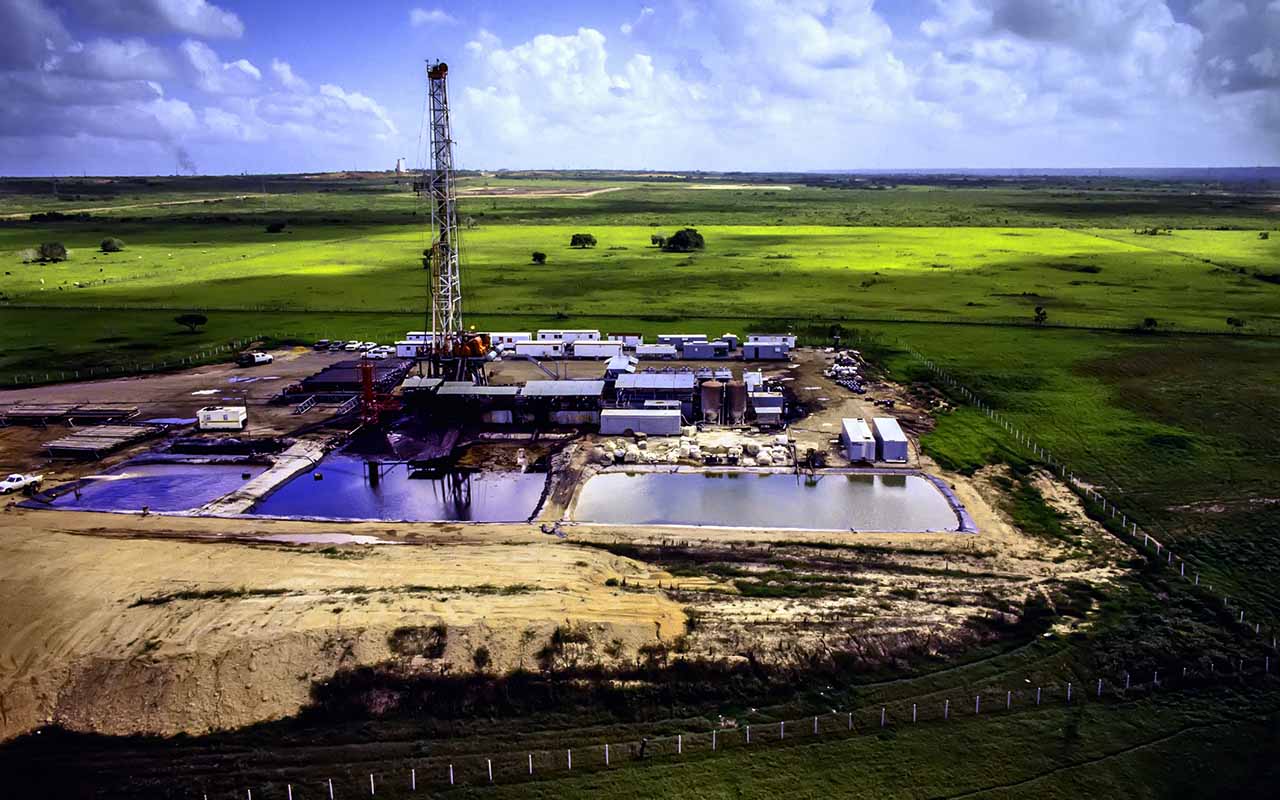
#3 Worst: Range Resources
- Market value: $667.4 million
- 11-year change: -92.7%
Life hasn't been much fun for long-suffering Range Resources (RRC, $2.62) shareholders. The shares are down 93% over the past 11 years. The share price cratered during the 2014-15 energy bust and hasn't really stopped falling.
Range Resources was emblematic of the shale boom. The stock was essentially a highly leveraged bet on energy prices. In April 2000, RRC traded for less than a dollar. By its peak in 2014, the stock traded for north of $90 per share. It frequently made "best stocks" lists, and anyone who had the good fortune of buying near the low made close to 100 times their money.
Unfortunately, it didn't last. The stock has given nearly all of those gains back.
Unless conditions improve relatively soon, Range Resources might be in considerable peril. Its bonds – rated as junk – trade for about 70 cents on the dollar.
Range Resources has a long history, and the company might manage to pull a rabbit out of a hat and turn things around. But that will be exceedingly difficult without a major improvement in energy prices.
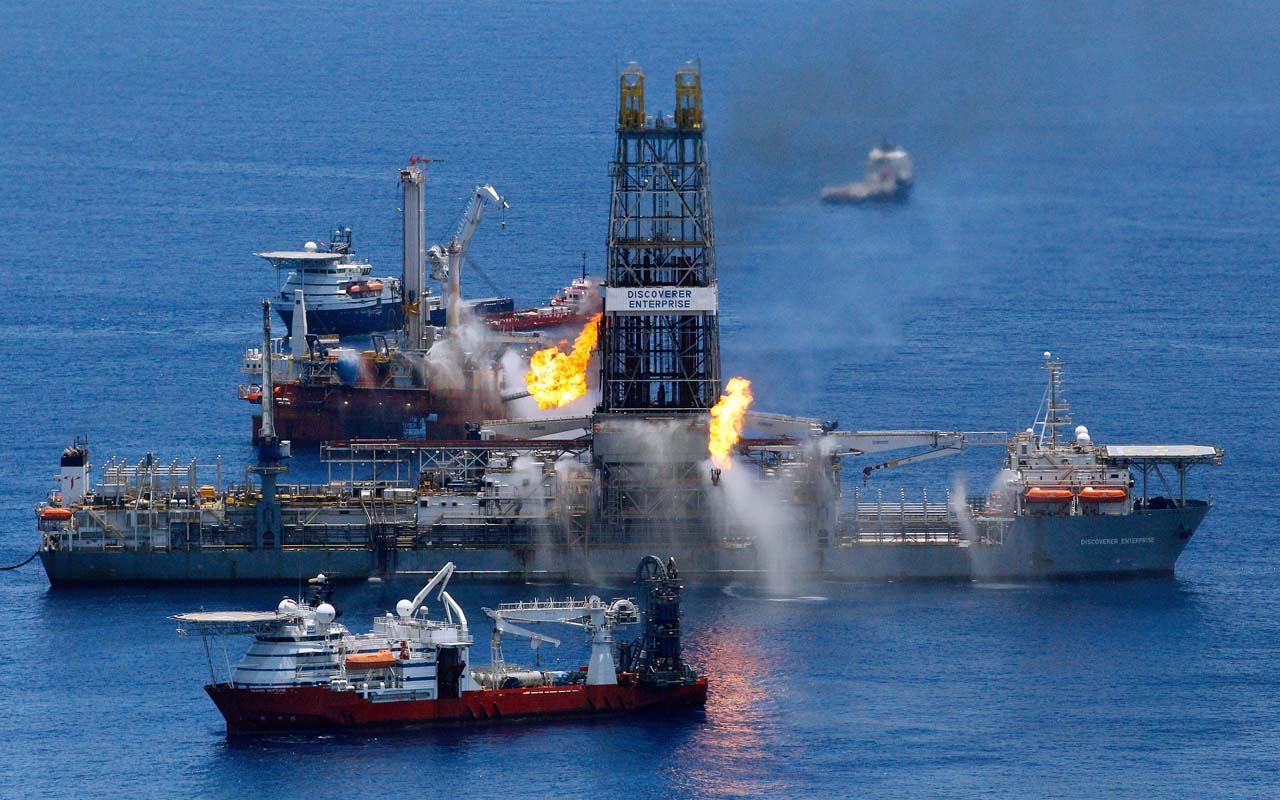
#2 Worst: Transocean
- Market value: $1.5 billion
- 11-year change: -95.1%
Onshore shale producers are hurting these days. But the beauty of the shale plays is that they are relatively easy to switch on or off as demand warrants. It's not that expensive to drill a new well, and production declines quickly. So long as you're well capitalized, a good shale producer can survive in this market.
Given the low barrier to entry in shale, it's harder to justify a major, multiyear investment in offshore exploration and production. Sure, the output is vastly larger and longer lived. But it costs a fortune and requires years to get a project producing.
This brings us to Transocean (RIG, $2.44), a leading offshore driller.
Transocean specializes in ultra-deepwater drilling. The problem is that there is very little demand for those services in a world in which there is an oil-supply glut and fresh supplies can be easily produced onshore at a fraction of the price. Since 2013, the company's annual revenues have dropped by two-thirds.
Transocean's shares have been in freefall, losing more than 95% of their value over the past 11 years. For RIG to mount a recovery, energy prices simply must show signs of life.
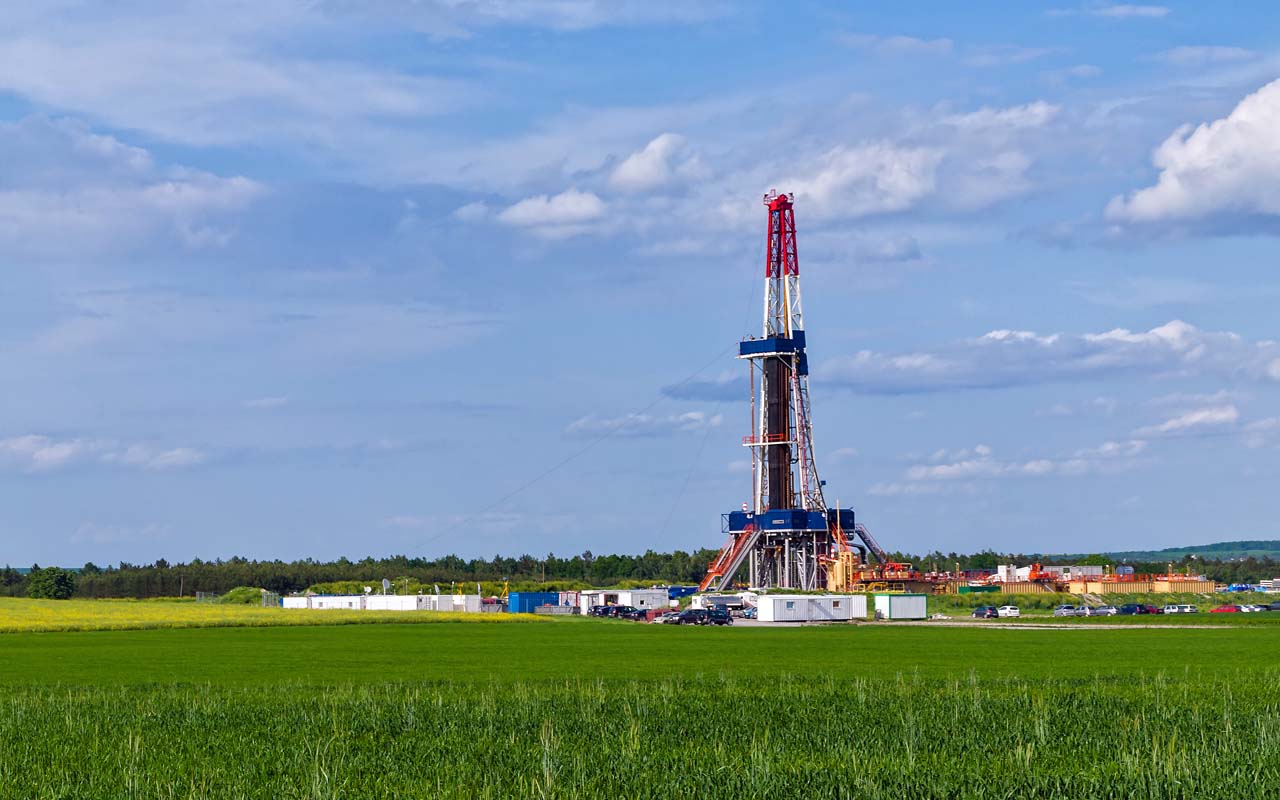
#1 Worst: Chesapeake Energy
- Market value: $424.3 million
- 11-year change: -98.5%
Finally, we get to the biggest loser – or at least the biggest loser still standing – of the past 11 years. Onshore fracking leader Chesapeake Energy (CHK, $0.22) has lost an incredible 98.5% of its value, and its shares now trade at just 22 cents.
There's no real surprise here. The energy sector is hurting, and leveraged players such as Chesapeake are hurting the worst.
Chesapeake's survival as a publicly traded company is in jeopardy. If nothing else, CHK won't meet the requirements to stay listed on the New York Stock Exchange if it doesn't do a reverse stock split – the NYSE requires that its listed stocks maintain a share price of at least a dollar.
But the problems go beyond delisting. Chesapeake avoided bankruptcy in 2019 by renegotiating terms with creditors and issued a "going concern" warning in its third quarter earnings call. To the uninitiated, this warning is a statement by the company that its very existence is in question.
A stock as cheap as CHK could be considered a nice lottery ticket. It wouldn't take much in the way of good news to send the shares up hundreds of percent. But like a lottery ticket, you have to be prepared to lose your entire investment.

#11 Best: Domino's Pizza
- Market value: $13.0 billion
- 11-year change: +5,771.0%
We've suffered through the beat down of the losers. Now for the uplifting part: the 11 best stocks of the past 11 years.
Domino's Pizza (DPZ, $336.41) is the 11th-best performer in the Russell 1000 since the bull market started, up an impressive 5,771%. And indeed it might have some more room to go, given its status among top stocks to ride out the coronavirus outbreak.
Worries about the virus – and a preference for home delivery over eating in a crowded restaurant – help to explain some of the buoyancy of late. But the stock had already been ripping higher since the 2009 bottom and likely would have continued doing so, even if we'd never had the coronavirus scare.
Domino's has been a technology leader within the food services industry. Even more importantly, it has learned from its mistakes. The company was coming off of a bad run in 2009, and management decided changes needed to be made. Domino's changed up their recipes, issued a major mea culpa in their advertising and came back stronger than ever.
DPZ probably won't deliver another 5,771% run over the next 11 years. But don't be surprised if it continues to beat the pants off the market.
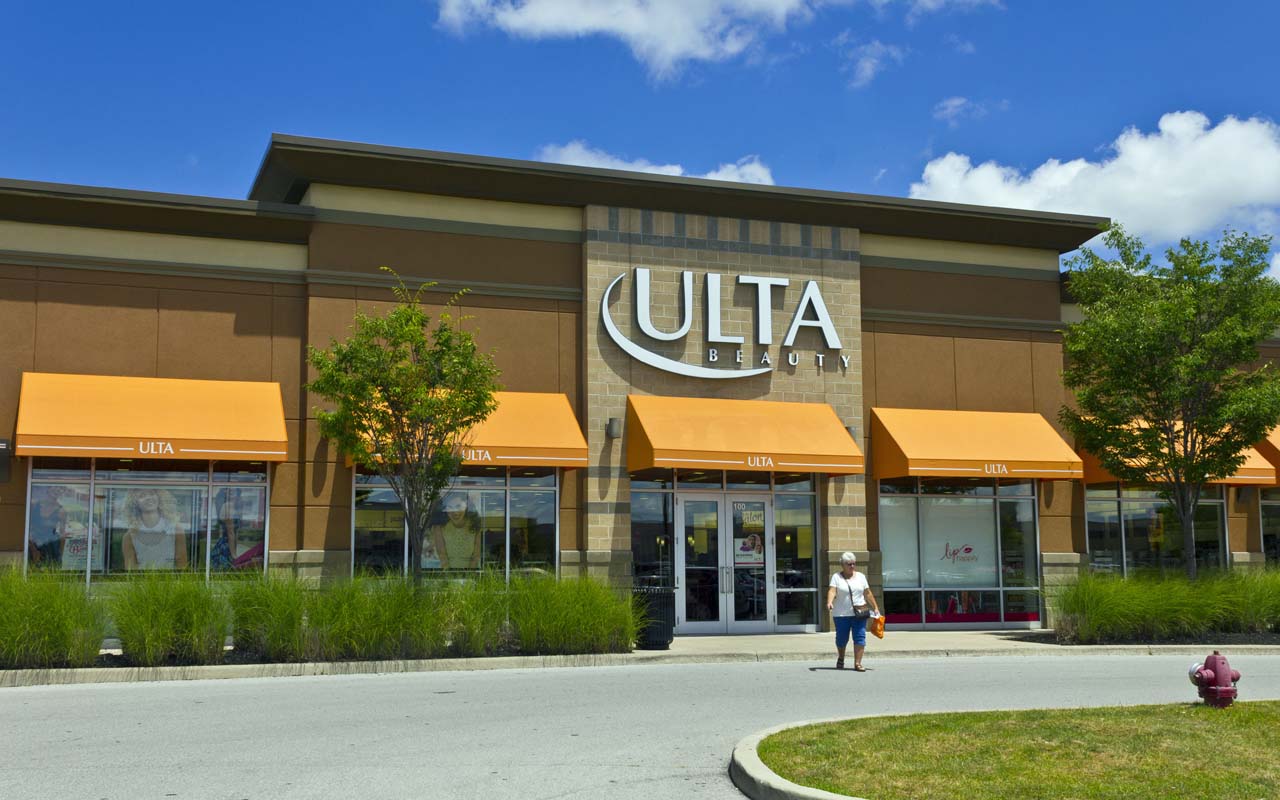
#10 Best: Ulta Beauty
- Market value: $14.7 billion
- 11-year change: +5,880.9%
Beauty retailer Ulta Beauty (ULTA, $256.58) has had a fantastic run, up a whopping 5,880.9% since the 2009 bottom. The company runs a chain of more than 1,200 stores, and in addition to selling beauty products, it provides hair and nail salon services.
Ulta's share price performance has been pretty mediocre of late, as the stock price has been parked at 2016 levels. But the shares' run-up from $5.62 on March 9, 2009, to $311 at the 2017 top was epic, easily making it one of the best stocks during that period, and the envy of other retailers.
Ulta Beauty is a much different company today than it was a fledgling, startup retailer back in 2009. It's now a $14 billion company by market cap, so we can't expect another 5,880.9% run over the next 11 years. But there's still plenty of room for growth and expansion – as long as the economy's in the right place to accommodate it.

#9 Best: Insulet
- Market value: $11.3 billion
- 11-year change: +6,169.2%
Biotech and medical device names tend to have good representation on lists like these because of the nature of the industry. These stocks are like lottery tickets. Many never go anywhere. But it only takes one to really knock it out of the park with a major breakthrough that goes mainstream.
That brings us to Insulet (PODD, $179.30), which has enjoyed a fantastic $6,169.2% run through the bull market.
Insulet Corporation sells insulin delivery systems for people with diabetes. Its product that inspired its stock ticker symbol is the OmniPod System, which promises wearable, tubeless insulin delivery. The OmniPod device sticks to the skin and doesn't require needles. And you can monitor performance with the Personal Diabetes Manager, a handheld wireless device that programs the Pod.
It's a revolutionary product that has improved the lives of diabetics around the world.
Even though the company is now well established, Insulet still is growing its quarterly revenues at a 27% annual clip. That might keep its fantastic stock market run intact for at least a little longer.

#8 Best: Netflix
- Market value: $161.9 billion
- 11-year change: +6,608.5%
No stock has done more to shape entertainment over the past 20 years than Netflix (NFLX, $368.97). Netflix created streaming video as we know it today, transformed programming to an on-demand model and made binge-watching TV shows normal.
But this was actually Netflix's second act.
Prior to disrupting television, Netflix essentially killed the traditional movie rental business with its DVD-by-mail model. Rather than having to schlep to the nearest Blockbuster, movie watchers could pre-order DVDs, have them delivered to their homes and then return them in pre-addressed envelopes when convenient. It seems almost quaint now, but it was revolutionary in the early 2000s.
It remains to be seen whether Netflix has a third act, but it seems to be doing just fine on its current business model. Shares are up 6,608.5% over the past 11 years.
Netflix has new competitive threats that it didn't have back in 2009. Amazon.com (AMZN) started its first streaming service in 2006, but it took a few years to get traction. And now Disney (DIS) has entered the fray with Disney+. Furthermore, content costs aren't getting any cheaper, and Netflix is frequently getting into bidding wars with rival streamers. And all of this is happening as new subscriber growth is starting to level off in the United States.
All the same, don't count Netflix out in the long term. It has become a staple in millions of homes, and its expansion into international markets is still in the early stages.

#7 Best: LendingTree
- Market value: $3.7 billion
- 11-year change: +7,104.1%
The destruction of the banking sector in 2008 and the tighter regulation that followed created an opening for nimble fintech companies to muscle into the market. And that's exactly how LendingTree (TREE, $283.12) managed to return 7,104.1% over the past 11 years.
LendingTree is not a bank or mortgage lender, but rather a marketplace. It is a third-party service that submits your loan request to multiple bankers and brokers within its network. These companies then compete to get you the lowest price.
And it's not just mortgages. LendingTree allows you to find the best deals on auto loans, credit cards, insurance and more.
As the millennials, the most tech-savvy generation in history, finally start to settle down and buy homes, LendingTree should continue to see healthy revenue growth. OK, 7,000%-plus returns might be stretching it, but it's worth noting that LendingTree is still growing its revenues at a 26% annual rate.

#6 Best: Dexcom
- Market value: $26.2 billion
- 11-year change: +8,182.1%
The past 11 years have been a lucrative time to be in the business of fighting diabetes. We've already covered Insulet Corporation and its OmniPod solution. Now, let's take a look at Dexcom (DXCM, $286.56), one of the best stocks of the past decade-plus.
Like Insulet, Dexcom helps diabetes patients manage their blood sugar, specializing in continuous glucose monitoring (CGM) systems. Dexcom makes wearable sensor that transmits your glucose numbers to your iPhone, Apple Watch or Android device.
Business has certainly been good. Since the March 2009 market bottom, Dexcom has returned 8,182.1%. The stock has nearly doubled over the past year alone.
While DXCM clearly has a lot of momentum behind it, investors should tread carefully here. The stock's valuation is well into nosebleed territory with a price-to-earnings ratio of nearly 250 and a price-to-sales ratio of 17.
Dexcom is growing its revenues at a 37% annualized clip, so it's easy to see why they find it worthwhile to pay a premium. But at current prices, you can't help but wonder if all the good news is more than priced in.

#5 Best: Exact Sciences
- Market value: $9.7 billion
- 11-year change: +8,307.7%
No one wants to experience a colonoscopy. It is a universally hated medical procedure, and the discomfort associated with it no doubt discourages a lot of patients from having one done. That's unfortunate, because a lack of proper screening allows potentially deadly colon and rectal cancers to go undetected.
This is where Exact Sciences (EXAS, $65.58) rides in to the rescue. Exact Sciences' Cologuard solution screens for colon cancer with a simple stool sample that can be sent to the lab in a pre-addressed box.
Apart from making the process painless and far less time consuming that the traditional test, Cologuard has helped to raise awareness of colon cancer. We'll never know how many lives have been saves or may continue to be saved in the future due to Exact Sciences' efforts.
Since the 2009 stock market bottom, Exact Sciences has returned a staggering 8,307.7%, making it one of Wall Street's best stocks since that time. That's doing well by doing good. Remarkably, Exact Sciences' spectacular returns come in spite of the stock losing nearly half its value over the past eight months.
In its last quarterly earnings release, Exact Sciences reported a more-than-doubling of its revenues year-over-year. Yet the company isn't profitable and isn't expected to be profitable next year either. So, for all the company's promise, EXAS still must be considered highly speculative.

#4 Best: Entegris
- Market value: $7.1 billion
- 11-year change: +9,128.1%
Making semiconductors requires a high degree of precision, as even a speck of dust can wreak havoc on the manufacturing process. Well, this is exactly where Entegris (ENTG, $52.60) excels. The company develops micro contamination-control products to semiconductor makers and other high-tech industries such as flat-panel display manufacturers.
Business has certainly been good. Entegris' stock price is up an incredible 9,128.1% over the past 11 years.
Semiconductors are a notoriously cyclical industry, so it's entirely possible that Entergris will have a few rough quarters in front of it if the coronavirus scare pushes us into a recession. It's also worth noting that many of its customers are in Asia, where supply chains have been hit particularly hard.
But given ENTG's strong positioning in a critical sector for the modern economy, we probably shouldn't expect the shares to stay down for long.
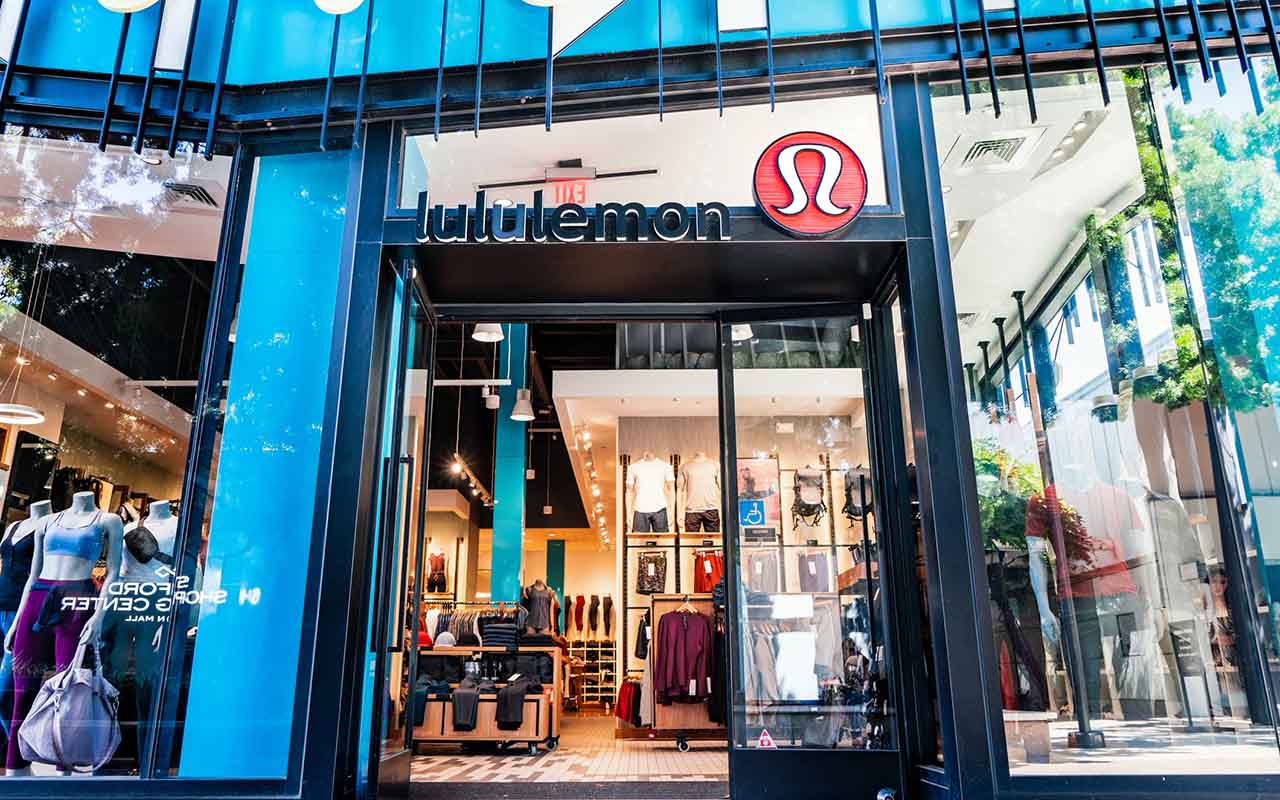
#3 Best: Lululemon Athletica
- Market value: $28.5 billion
- 11-year change: +9,635.0%
Twenty years ago, it would have been considered sloppy to slog around town in your gym clothes. Today, it's considered normal and even has a trendy name: athleisure!
Perhaps no company more epitomizes the athleisure trend than Lululemon Athletica (LULU, $218.55), which is among the three best stocks of the bull market at an incredible 9,635% return over the past 11 years.
Lululemon made yoga pants a fashion staple even for people that may have never taken a yoga class in their lives. The company also has a successful men's line of athletic clothes and comfortable but work-appropriate pants and shirts.
Despite being a $28.5 billion company, Lululemon still is growing like a weed. Overall company sales grew at a 23% clip last quarter, and revenue in the men's segment was 38%. Same-store sales were up 11%, but the bigger story is that online sales were up 30%.
We have no way of knowing what fashion-conscious consumers will embrace. But it would seem that the athleisure trend still has a ways to run, and LULU is in prime position to take advantage of that trend.

#2 Best: Nexstar Media Group
- Market value: $4.5 billion
- 11-year change: +18,362.3%
Most of the stocks on this list are far from surprising. They're hot names that have dominated the headlines for years.
That makes Nexstar Media Group (NXST, $97.85) a curious addition. Nexstar is a television broadcaster that runs local affiliate stations for ABC, NBC, FOX, CBS, The CW and others across markets reaching 63% of all American households.
In an era in which Netflix and other streaming services are all the rage, it seems odd to see a traditional broadcaster taking the No. 2 slot with total returns of 18,362.2%. This is particularly true given that paid TV is now a shrinking industry as more and more Americans "cut the cord" and cancel their cable package.
Part of Nexstar's enduring resistance to this trend is the fact that its stations are local. If you want local news, sports and weather, you're not getting that on Disney+ or Netflix. And viewers that cut their cable subscriptions often continue to get local channels over aerial antennae.
It's probably unreasonable to expect returns of nearly 20,000% over the next 11 years. But Nexstar has proven that old media still has some life left in it.

#1 Best: Jazz Pharmaceuticals
- Market value: $6.7 billion
- 11-year change: +20,544.8%
And now, the moment you've been waiting for. The best performing stock in the Russell 1,000 since the 2009 market bottom is Jazz Pharmaceuticals (JAZZ, $119.74), which has generated a whopping 20,544.8% in returns.
Biotech stocks such as Jazz are generally risky propositions. It's nearly impossible to know ahead of time which drugs will have successful clinical trials or which of a plethora of potential breakthroughs will actually pan out.
But when one does, the rewards can be stunning.
Jazz wasn't doing particularly well 11 years ago. The company had had to reduce headcount and its future was uncertain. Today, the company has a portfolio of profitable drugs, including narcolepsy treatment Xyrem, cancer drug Erwinaze, and Defitelio, a drug that treats hepatic veno-occlusive disease. Additionally, the company has drugs in the pipeline targeting Parkinson's disease and leukemia.
While Jazz tops this list of best stocks, substantially all of its explosive growth happened between 2009 and 2013. JAZZ shares have traded in a wide trading rage ever since, and today, they're actually relatively cheap at just 13 times earnings.
Get Kiplinger Today newsletter — free
Profit and prosper with the best of Kiplinger's advice on investing, taxes, retirement, personal finance and much more. Delivered daily. Enter your email in the box and click Sign Me Up.

Charles Lewis Sizemore, CFA is the Chief Investment Officer of Sizemore Capital Management LLC, a registered investment advisor based in Dallas, Texas, where he specializes in dividend-focused portfolios and in building alternative allocations with minimal correlation to the stock market.
-
 Stock Market Today: Stocks Struggle Amid Tariff Uncertainty
Stock Market Today: Stocks Struggle Amid Tariff UncertaintyBoeing dropped after China suspended new aircraft orders, while Bank of America and Citi climbed on earnings beats.
By Karee Venema
-
 Starbucks 2025 Dress Code Changes: See the New Look
Starbucks 2025 Dress Code Changes: See the New LookThe 2025 Starbucks dress code change features a uniformed look as part of creating a more familiar and friendly cafe experience.
By Sean Jackson
-
 Stock Market Today: Stocks Struggle Amid Tariff Uncertainty
Stock Market Today: Stocks Struggle Amid Tariff UncertaintyBoeing dropped after China suspended new aircraft orders, while Bank of America and Citi climbed on earnings beats.
By Karee Venema
-
 Stock Market Today: Stocks Gain on Tech, Auto Tariff Talk
Stock Market Today: Stocks Gain on Tech, Auto Tariff TalkThe Trump administration said late Friday that it will temporarily halt tariffs on some Chinese tech imports.
By Karee Venema
-
 Stock Market Today: Stocks Surge to Close a Volatile Week
Stock Market Today: Stocks Surge to Close a Volatile WeekIt was another day with a week's worth of both news and price action, but it ended on a strongly positive note.
By David Dittman
-
 Stock Market Today: Uncertainty Proliferates: Dow Loses 1,014 Points
Stock Market Today: Uncertainty Proliferates: Dow Loses 1,014 PointsWeaker-than-expected consumer inflation data wasn't enough to stabilize sentiment during another volatile day for financial markets.
By David Dittman
-
 Stock Market Today: Tariff Pause Triggers 3,000-Point Dow Rally
Stock Market Today: Tariff Pause Triggers 3,000-Point Dow RallyThe bond market is sending concerning signals as the Trump administration executes its rapid reordering of global trade relationships.
By David Dittman
-
 Stock Market Today: Tariff Talks Drive Another Up-and-Down Day
Stock Market Today: Tariff Talks Drive Another Up-and-Down DayTrade war negotiations are happening, but the "fear gauge" is gyrating, and investors, traders and speculators are still searching for signs of a bottom.
By David Dittman
-
 Stock Market Today: Trump Pushes Dow Into 2,600-Point Swing
Stock Market Today: Trump Pushes Dow Into 2,600-Point SwingTariffs and trade war weigh on prices across global financial markets, with little light at the end of the tunnel.
By David Dittman
-
 Stock Market Today: Dow Drops Another 2,231 Points to Hit a Correction
Stock Market Today: Dow Drops Another 2,231 Points to Hit a CorrectionThe Nasdaq Composite, meanwhile, entered a new bear market with its latest slide.
By Karee Venema
